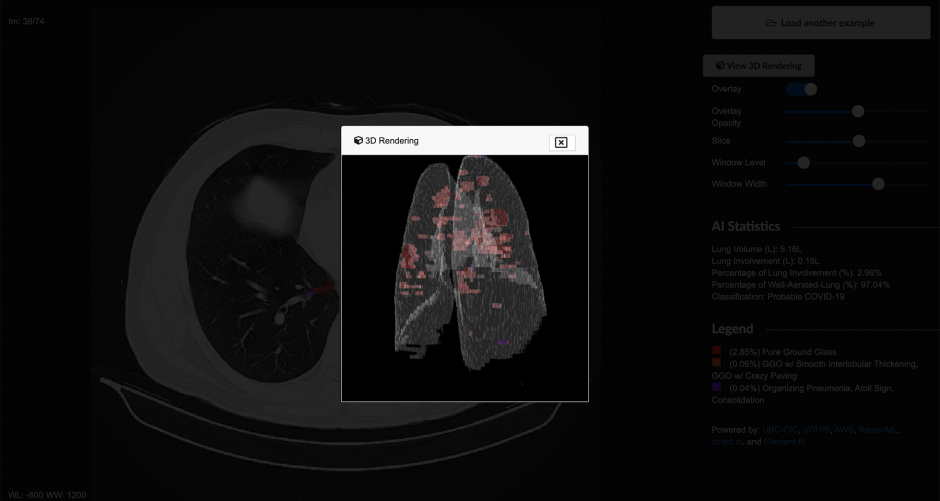Application – Version 2
Project phases
- Phase 1 - Open Source AI Model for COVID-19 CT Diagnostics and Prognosis
- Phase 2 - Demo – Version 1
- Phase 3 - Application - Version 2 (current page)
- Phase 4 - L3-Net Version 3.0
ABOUT L3-NET VERSION 2.0
The beta model has been trained with more data from other sites and machines. This model was also trained using more confirmed COVID cases.
This resulted in a significant change compared to the predictions. It is no longer just a binary prediction of ‘Yes this is COVID’ and ‘No this is normal lung’ The ‘Beta model’, we can call it, detects the same opacity patterns but makes predictions on the likelihood of infection. This was done to make it easier to train the model, and has resulted in better accuracy.
IMPORTANT NOTES
Your study must consist of only DICOM files. We are currently not accepting NIfTI files at this time. The online viewer also only accepts one series at a time. Please put all the DICOM files in a folder, and then zip that folder. The files and folder do not need to have any specific name. If multiple series are uploaded in one zip, the model will not produce an output. You can choose multiple .zips to upload at one time. There is currently a 200mb limit on the .zip.
Please be aware that while no one will have access to your images except for yourself, the files themselves will be hosted on a private S3 bucket in Amazon’s AWS cloud servers in Canada. Please ensure that your files are anonymized to the standards required by your organization or data supplier prior to upload. Files will be deleted automatically after 7 days. During this time you can view the AI results any time you would like.
After uploading studies to the model, it will take some time (between 3-10 minutes) to process your study. The status of your upload will be indicated on the list of “Files submitted”. When the status is a green checkmark, press the “Visualize ML model” button next to the checkmark to view the visual output. The visual GUI is designed to be similar to a PACS viewer!
Currently the alpha model is capable of detecting the following opacity patterns:
- Pure Ground Glass
- GGO w/ Smooth Interlobular Thickening/GGO w/ Crazy Paving
- Organizing Pneumonia/Atoll Sign/Consolidation
The model is currently being iterated upon to further split the groups apart so that we can individually identify all of the above patterns.
The code for this application will be made available in a GitHub repo for users to deploy using their own AWS accounts. By cloning the repo and deploying to your own local machine, you will be able to keep all of your data in your own S3 bucket and still utilize AWS cloud computing to provide real time AI interpretations. Keep an eye out on this page for the link, or contact us to get notified when it’s ready for launch.
Clinical Aspects
This model is not intended to be used to replace a radiologist. We want to help empower radiologists with the ability to make quantifiable interpretations of CT scans. Skilled radiologists will be able to look at these scans and come to similar conclusions as our model in very little time. Our aim is to provide the radiologists with tools to give them much more accurate, quantitative measurements that they can use to help bolster their decision-making process.
About the University of British Columbia Cloud Innovation Centre (UBC CIC)
UBC’s CIC is a public-private collaboration between UBC and Amazon. A CIC identifies digital transformation challenges, the problems or opportunities that matter to the community, and provides subject matter expertise and CIC leadership.
Using Amazon’s innovation methodology, dedicated UBC and Amazon CIC staff will work with students, staff and faculty, as well as community, government or not-for-profit organizations to define challenges, to engage with subject matter experts, to identify a solution, and to build a Proof of Concept (PoC). Through co-op and work-integrated learning, students also have an opportunity to learn new skills which they will later be able to apply in the workforce.
UBC’s CIC focuses on Community Health and Wellbeing.

